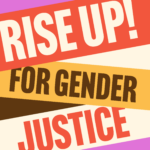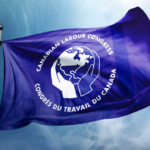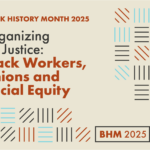On October 29, 1999 the federal government announced its plan to implement what stands as the biggest pay equity pay out in history. It was sweet victory for the Public Service Alliance of Canada (PSAC), which filed the original complaint to the Canadian Human Rights Commission on behalf of its members in 1984.
Fair pay means that the work women and men do is equally respected and valued. Unfortunately, this is not the reality for many workers in Canada, where there is still a big gap between what women and men earn. Thanks to the labour movement, this pay gap is already much less for women with unions, but income equality for all working women is the ultimate goal.
For decades, the labour movement and women’s organizations have pushed for improvements to the federal pay equity system, calling for a shift from a complaints-based approach toward proactive legislation. This was a key demand of the Canadian Women’s March 2000, when thousands of women, trade unions and national women’s organizations mobilized for a comprehensive strategy to end poverty and violence against women.
In 2001, a federal Pay Equity Task Force was appointed, and after an extensive and exhaustive process, made over a hundred important recommendations to address the gender wage gap in Canada. Their 2004 report also recognized that wage discrimination exists for people with disabilities, Indigenous workers and racialized workers.
Canada’s unions have been hard at work to ensure the Task Force recommendations are put in place. They condemned the current Liberal government’s decision to delay any action on pay equity until 2018, despite the lofty campaign promises and publicly stating that having a gender wage gap in Canada today is unacceptable. After two years in power, they have also failed to eliminate the Conservative’s Public Sector Equitable Compensation Act, legislation takes away the right of women federal public servants to equal pay for work of equal value.
Only two provinces – Ontario and Quebec – have proactive pay equity laws covering both public and private sector workers. Under these laws, employers must take active steps to identify and eliminate wage discrimination. Several provinces have no pay equity legislation at all. Unions push for proactive pay equity laws in all jurisdictions to make sure that workers in both the public and private sectors have their rights respected.
Collective bargaining and pay equity measures significantly reduce the wage gap for women. That’s because together, women and their unions negotiate pay that reflects their skills, education and responsibilities. And that fair pay puts more into women’s pockets to spend on their families and in their communities.






